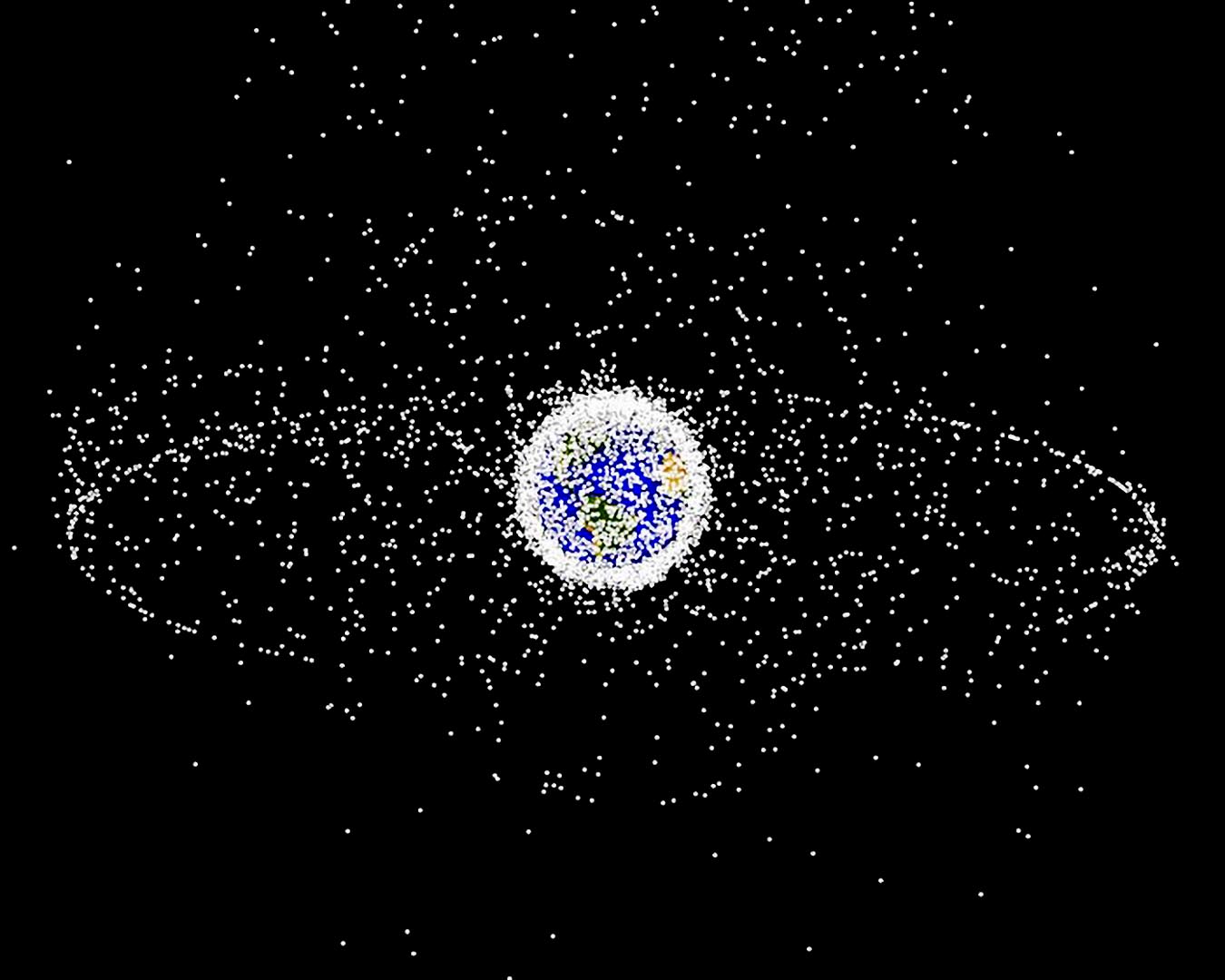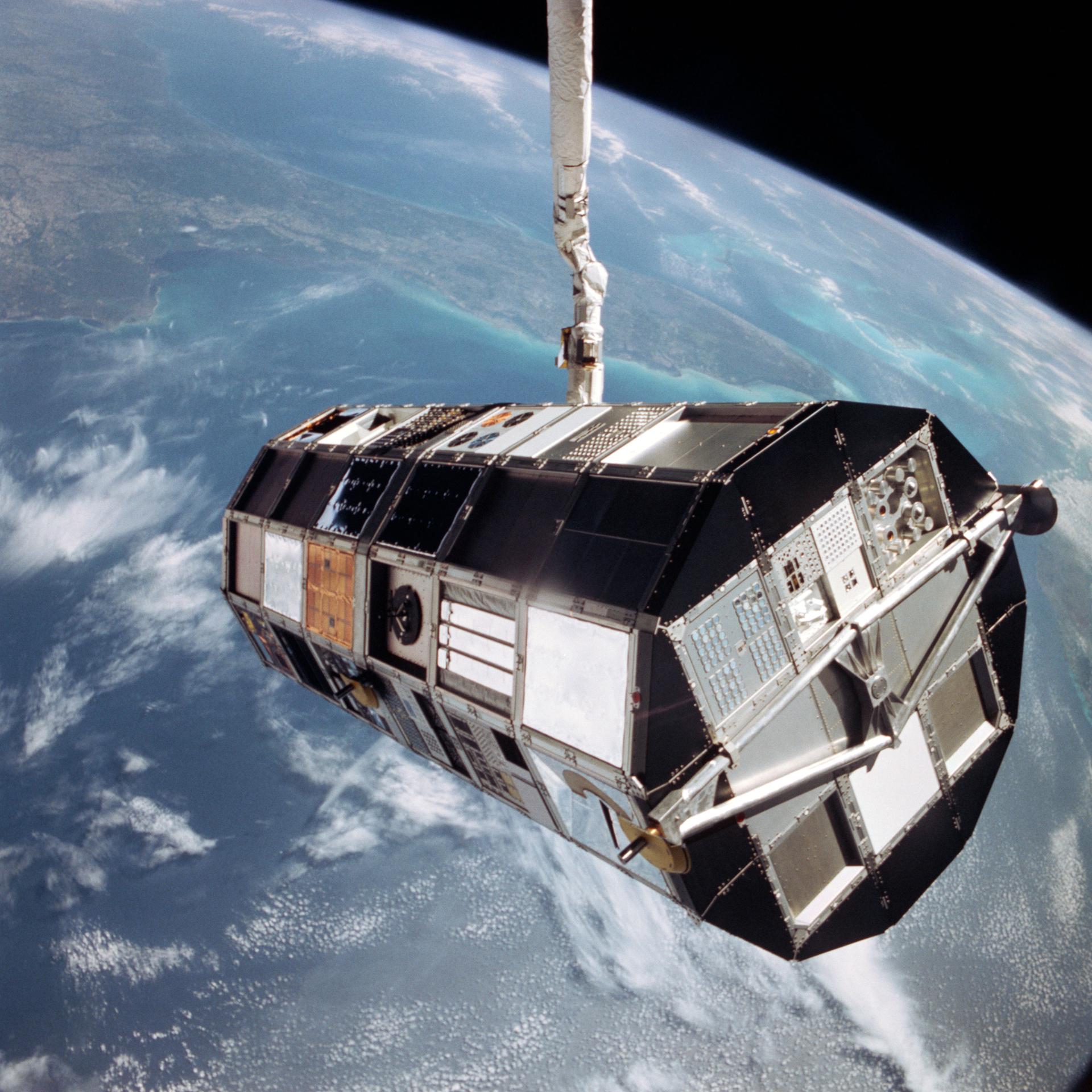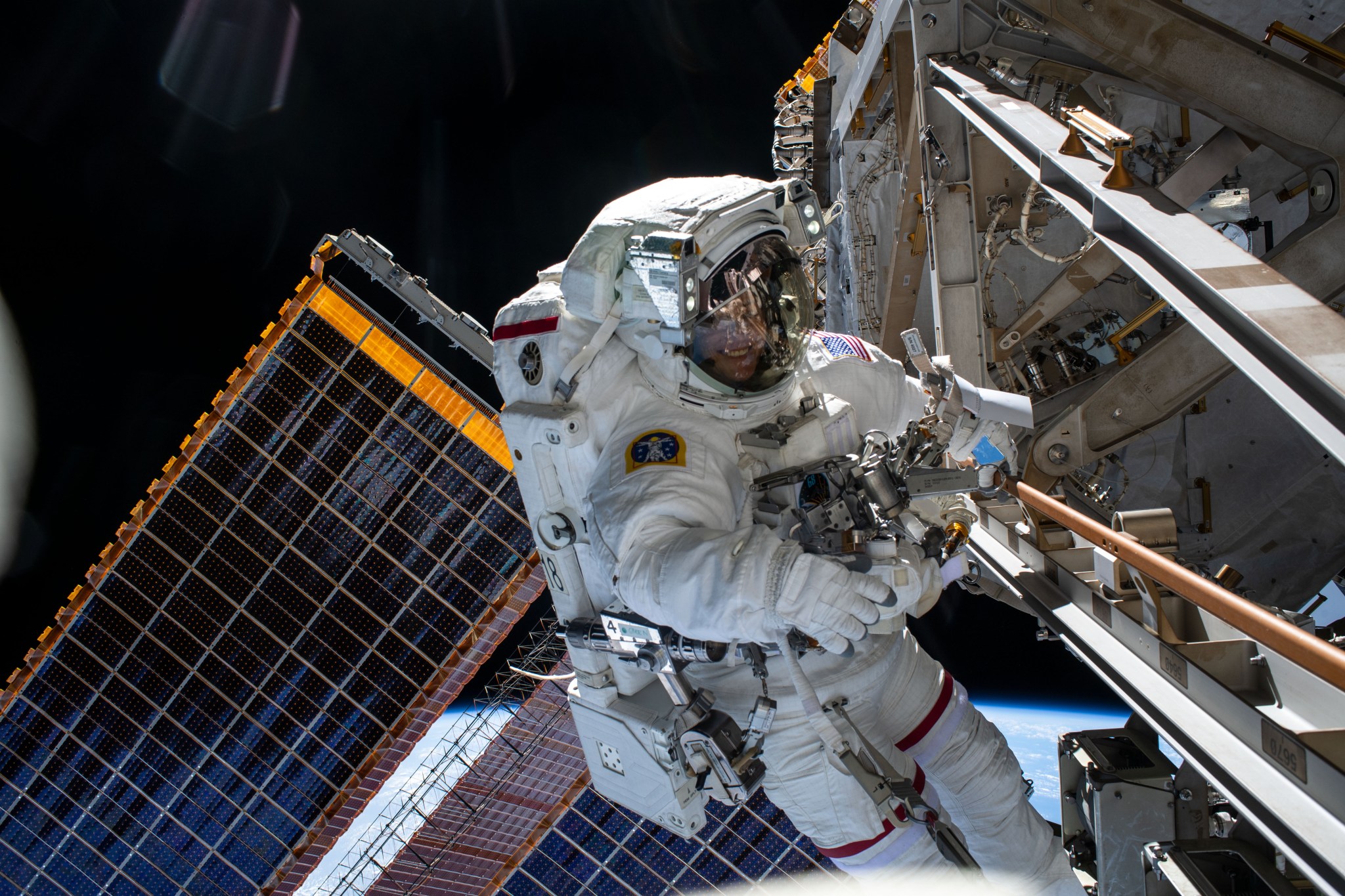This article is for students grades 5-8.
Orbital debris (duh BREE) is “junk” that is circling Earth. It is pieces from spacecraft. Humans have been launching objects into space for more than 50 years. Most of those objects have fallen back to Earth. A piece of debris falls back to Earth about once a day. These objects either land or burn up in the atmosphere. Most objects that return to Earth end up in water, since it makes up 70 percent of Earth’s surface. But many of the objects sent into space are still in orbit around Earth.
____________________________________________________________________________________________
Words to Know
stage: one of two or more sections of a rocket that have their own fuel and engine
____________________________________________________________________________________________
How Big Is Orbital Debris?
On one extreme, debris can be as small as tiny flecks of paint or bits of metal that have come off spacecraft. On the other, large debris could be an entire satellite that is no longer working. The most common source of orbital debris larger than 1 centimeter (0.39 inches) is the explosion of objects orbiting Earth. These are often rocket upper stages. They can contain fuel or high-pressure fluids.
Why Is Orbital Debris Important?
Most “space junk” is moving very fast. It can reach speeds of 4.3 to 5 miles per second. Five miles per second is 18,000 miles per hour. That speed is almost seven times faster than a bullet. And if a spacecraft is moving toward the debris, the total speed at which they collide can be even faster. The average impact speed of a piece of orbital debris running into another object is 22,370 miles per hour. Since it is moving so quickly, a tiny piece of orbital debris can cause a lot of damage. Being hit by a piece of debris smaller than half an inch around – traveling at about six miles per second – would be like being hit by a bowling ball moving at 300 miles per hour.
How Much Debris Is in Orbit?
To keep astronauts safe, scientists use radar to keep track of all the debris in orbit. They classify it by its size. About 13,000 known objects are bigger than 10 centimeters in diameter. Scientists believe that there are more than 100,000 pieces of orbital debris between 1 cm and 10 cm. And tens of millions of pieces are smaller than 1 cm. All pieces of debris larger than 10 cm are carefully tracked using radar and telescopes. That information is used to estimate the number of small pieces of debris. Even though they cannot detect every piece, scientists have an idea of the amount of debris that is out there.
To determine the number of pieces of very small debris — smaller than 1 millimeter — were in orbit, scientists studied the space shuttle when it returned from orbit. They looked for damage from debris impacts. When the space shuttle returned from missions, scientists counted the number of impacts it experienced. They then compared the number of dents or holes to the amount of space the shuttle traveled through. These comparisons helped them estimate how many of the tiny objects are in orbit around Earth.
NASA also has performed experiments in space to learn more about orbital debris. Satellites like the Long Duration Exposure Facility were brought back to Earth. Scientists then counted the number of objects that hit the satellite. The LDEF was a satellite that was left in space for over five years. It tested what happened to materials exposed to space.
____________________________________________________________________________________________
Words to Know
micrometeoroid: a tiny (size of a grain of sand) particle of space debris, natural or artificial, traveling through space at high speeds
____________________________________________________________________________________________
How Do Astronauts Stay Safe From Orbital Debris?
Since NASA keeps track of larger debris, spacecraft with crews are able to dodge it. When an object is expected to come within a few miles of the International Space Station, NASA can slightly change the station’s path to avoid the object. Plus, the space station is the most heavily shielded spacecraft ever. It can survive impact with smaller pieces of debris. The debris would hit panels that serve as shields instead of vital parts of the station.
Spacesuits also help protect crew members from orbital debris and micrometeoroids when the astronauts are outside the space station. The suits include a layer of strong, thin material that protects astronauts from impacts. This layer is made from the materials used in bulletproof vests.
Since the smallest pieces of debris cannot be tracked, collisions with them are bound to happen. The space shuttle often returns to Earth with tiny impact craters. Impacts have even created small cracks in the front windows. Windows are replaced after almost every mission. The shuttle has three layers of windows to protect the crew.
What Is NASA Doing About Orbital Debris?
As humans launch more and more objects, will Earth orbit turn into a dangerous, crowded junkyard? Space agencies around the world are working to make sure that does not happen. Since 1988, the United States has had an official policy to keep the creation of new orbital debris to a minimum. NASA even has an Orbital Debris Program Office at Johnson Space Center in Houston, Texas. This office looks for ways to create less orbital debris. It also looks for ways to get rid of debris that is already in space. Many U.S. aerospace companies also follow guidelines to reduce the creation of debris. The Russian, Japanese, French and European space agencies are keeping the creation of new debris low, too.
NASA and other space agencies are doing many things to reduce the problem of orbital debris. The upper stages of launch vehicles, and some satellites, are being placed in lower orbits. This location will cause them to re-enter the atmosphere and burn up sooner. Debris in orbits below 373 miles usually falls back to Earth within a few years. Objects at heights of more than 621 miles can stay in orbit for more than a century.
More About Orbital Debris
Orbital Debris Program Office
What Is A Spacesuit?
What Do You Do About Space Junk?
What Was the Space Shuttle?
Return to What Is Orbital Debris? (Grades K-4)

























